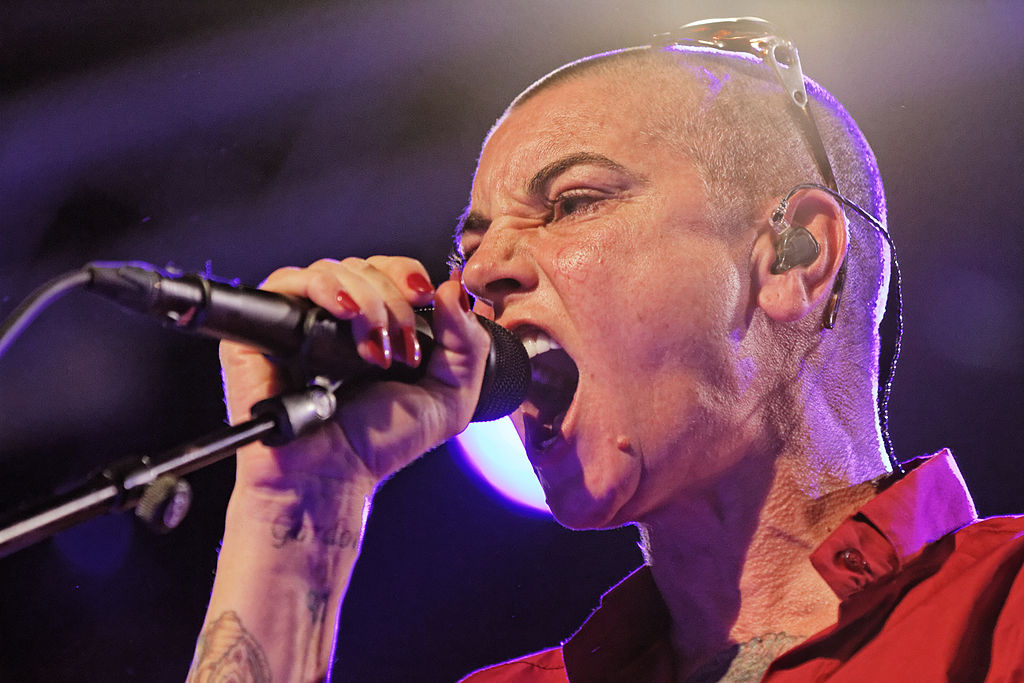Response by Neil de la Flor
Revealing Babel
Don't miss "How Transparent Should Poetry Be?," the counter-essay by Steve Lewis, and the TW poem under discussion: "A Thousand Bluebirds."

It took a hurricane twenty-plus years ago to spark my collaborative book with Maureen Seaton Sinead O’Connor and Her Coat of a Thousand Bluebirds (Firewheel, 2011). It took another hurricane this year (Irma), to blow out my electricity in Miami and force time back on my side to pen this response at 4:51 a.m.
In his TW essay “How Transparent Should Poetry Be?,” Steve Lewis argues that poetry needs to be more accessible to readers. He refers to his initial comment on Maureen’s and my poem “A Thousand Bluebirds,” which Talking Writing reprinted this spring. I never read comments—being a high school and middle school teacher, among other jobs, owns me—but I now know what Steve originally said about our poem:
I don't think it is transparent enough to ‘ordinary literate people’—and am wondering if you and any other readers of this superb magazine believe that kind of transparency is important—or not.
No.
Why? The first thing I think of is Wislawa Szymborska’s 1996 Nobel Lecture. Near the end of her speech, she said:
Granted, in daily speech, where we don't stop to consider every word, we all use phrases like ‘the ordinary world,’ ‘ordinary life,’ ‘the ordinary course of events’ ... But in the language of poetry, where every word is weighed, nothing is usual or normal. Not a single stone and not a single cloud above it. Not a single day and not a single night after it. And above all, not a single existence, not anyone's existence in this world.
People, including “ordinary literate people,” experience poetry at a personal level when they're open to it. Heck, they don't even have to be open to the experience. My students are forced to read poems all the time.
The word wonder also comes to mind. Maureen and I wrote this poem because it made us smile. I smiled when I just re-read it, because it reminds me of why we wrote it: Sinead O’Connor’s performance at a 1992 Bob Dylan tribute concert in Madison Square Garden. O’Connor’s appearance there happened just two weeks after her courageous performance on Saturday Night Live, when she tore up a photograph of the Pope, saying “Fight the real enemy.”
If you watch her Madison Square Garden performance on YouTube, note her blue coat. This became “a thousand bluebirds” in our poem.
At the time, O’Connor infuriated plenty of people by openly connecting her history of child abuse with the Catholic Church in Ireland. Sexual and physical abuse aren’t transparent or ordinary. They’re a violent hurricane with an eye that gives black eyes that can't be seen or touched. They last for a lifetime and manifest in invisible ways, but they’re always there. A quarter of a century after ripping up the Pope’s photo, O’Connor is speaking out again. In an interview with Dr. Phil this fall, her revelations about the abuse she suffered at the hands of her mother include: “She used to make me say over and over again ‘I am nothing. I am nothing’ while she was beating me.”
Maureen and I worked with the emotional subtext of abuse by keeping it as subtext. The poem is not about abuse per se. It's a poem about the transformational power of speaking out in the face of thousands of “fans” booing you in Madison Square Garden. It's about confronting the mob who tries to silence you for the second time and not backing down. Sinead O’Connor didn't back down. That's what we admired most.
So, how accessible should a poem be to an audience of non-writers? I want to know what being a “non-writer” means. When I facilitate writing classes with students spanning all ages, I let them know they're all writers. Because we are. And we all have stories to tell, don't we? Girl, don't we. Be your authentic selves, I tell my students.
But be accessible is not something I've ever uttered. It's not relevant. I love work that's accessible. I love work that I don't understand but can “access” through wonder and imagination.
Sinead O'Connor is a hurricane. That crowd booing at her at Madison Square Garden was also a hurricane. The power that seeks to silence abuse, especially the abuse of women, is a pernicious one. Maureen and I cheered her on stage, where she stood for two-and-a-half minutes facing a hostile crowd. Chin up. Eyes fierce. Wearing a brilliant blue blazer. And the power of a thousand bluebirds flew out of her mouth, carrying with them a message of resistance and resilience, a message that's as relevant now as it was back then.
We honored that power. To keep the conversation going.
Publishing Information
- “The Poet and the World,” Nobel Lecture by Wislawa Szymborska from the website Nobelprize.org, December 7, 1996.
- “Sinead O’Connor—Bob Dylan 30th Anniversary Tribute Concert,” October 16, 1992 (YouTube).
- “Why Sinead O’Connor Hit a Nerve” by Jon Pareles, New York Times, November 1, 1992.
- “Sinead O’Connor Claims ‘Possessed’ Mother ‘Delighted’ in Sexually Abusing Her…” (refers to Dr. Phil interview) by Chris Spargo, Daily Mail, September 11, 2017.
Art Information
- Sinead O'Connor at Festival de Cornouaille, 2014 © Thesupermat; Creative Commons license.
 Neil de la Flor is a writer, educator, artist, and executive director of Reading Queer, a Miami-based organization dedicated to promoting and fostering queer literary culture in south Florida.
Neil de la Flor is a writer, educator, artist, and executive director of Reading Queer, a Miami-based organization dedicated to promoting and fostering queer literary culture in south Florida.
For more information, visit Neil de la Flor's website or follow him on Twitter @neil_delaflor.
